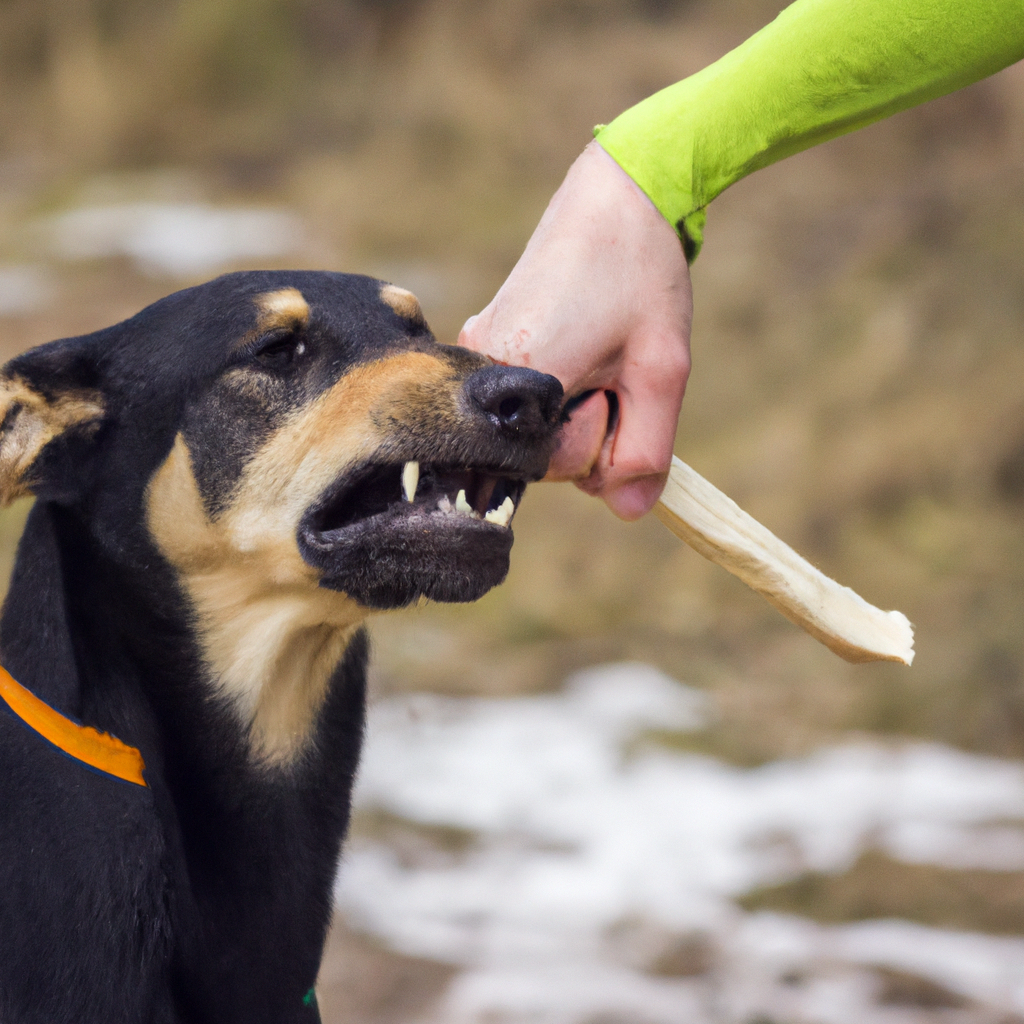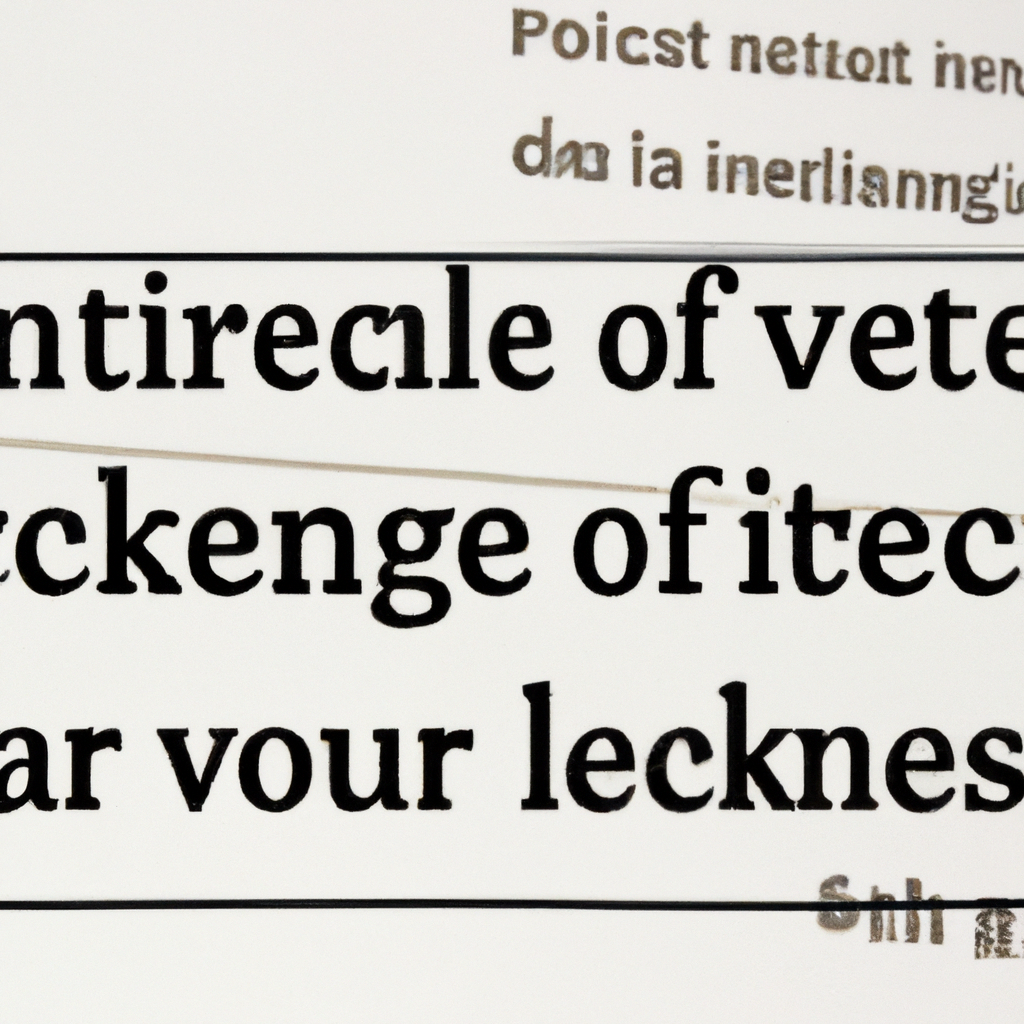Recognizing and Addressing Fear Aggression in Dogs
Nestled within the depths of their gentle souls, dogs can harbor unseen fears that may manifest as aggression. While

In a world of wagging tails and joyful barks, the chilling presence of fear aggression can cast an ominous shadow over our beloved canine companions. Like a hidden beast lurking within, fear aggression is a murky creature that arises unexpectedly, sending ripples of unease through both dog and owner alike. Yet, amidst this unsettling phenomenon, hope emerges. By shedding light on the complex tapestry of fear aggression and delving into the depths of its origins, causes, and potential solutions, we embark on a journey to ensure our furry friends find solace in a world free from the clutches of their own fears. Join us as we navigate the winding path of recognizing and addressing fear aggression in dogs, tracing our steps carefully and compassionately towards a brighter, more harmonious future.
Recognizing Fear Aggression in Dogs: Unveiling the Subtle Clues and Behaviors
Recognizing Fear Aggression in Dogs:
Understanding our furry friends can sometimes feel like deciphering a complex puzzle. One puzzle piece that can be particularly challenging is recognizing fear aggression in dogs. These subtle clues and behaviors can go unnoticed by even the most observant pet parents, but with a keen eye and patience, we can better understand and help our four-legged companions.
So, how can we unveil these subtle clues? Here are a few behaviors to watch out for:
- Lip licking: When a dog licks their lips in the absence of food, it can be a sign of anxiety or fear.
- Tail tucking: A dog tucking their tail tightly between their legs is often a clear indication of fear and unease.
- Growling and barking: These vocalizations can serve as warning signs that a dog is feeling fearful and may be on the verge of aggression.
Understanding these subtle clues can help us intervene before fear aggression escalates. By providing a calm and secure environment, seeking professional help if necessary, and giving our dogs the love and reassurance they need, we can ensure their emotional well-being and create a harmonious bond with our beloved pets.

Understanding the Root Causes of Fear Aggression: Delving into Environmental and Genetic Factors
When it comes to fear aggression in animals, it is crucial to explore the underlying factors that contribute to this behavior. While each case is unique, a combination of environmental and genetic factors often plays a significant role. By understanding these root causes, we can develop effective strategies to help our beloved pets overcome their fears and live happier, more balanced lives.
Environmental Factors:
- Early Life Experiences: Traumatic events during early development can have a profound impact on an animal’s behavior in adulthood. For example, puppies raised in high-stress environments or those subjected to abuse may display fear aggression as a defense mechanism.
- Lack of Socialization: Insufficient exposure to various stimuli and experiences as an animal grows up can lead to fear-based aggression. Animals that have not been properly socialized may perceive unfamiliar situations or individuals as threatening, triggering defensive responses.
- Prior Traumatic Encounters: Animals that have experienced past traumatic events, such as attacks by other animals or accidents, may develop fear aggression as a means to protect themselves from potential harm in similar situations.
Genetic Factors:
- Breed Predispositions: Certain breeds may have a genetic predisposition towards fear aggression, which can manifest as a result of their unique ancestral traits. For example, breeds historically used for guarding or protection may exhibit heightened vigilance and defensive behavior.
- Inherited Anxiety: Some animals may inherit anxiety-related traits from their parents, making them more prone to fear aggression. Genetic predispositions to anxiety can amplify an animal’s fear response and contribute to aggressive behavior in fear-inducing situations.
- Neurological Factors: Variations in an animal’s brain structure or neurotransmitter levels can influence their behavior and susceptibility to fear aggression. Imbalances or abnormalities in these neurological systems may heighten fear responses and predispose animals to aggressive behavior.

Addressing Fear Aggression in Dogs: A Multifaceted Approach for Training and Rehabilitation
Understanding Fear Aggression in Dogs
For many dog owners, fear aggression can be a challenging behavior to address. It is important to note that fear aggression is a defensive response that arises from a dog’s perception of a threat or danger. This behavior can manifest in various ways, such as growling, barking, lunging, or even biting. It is crucial to have an in-depth understanding of fear aggression in order to develop an effective multifaceted approach for training and rehabilitation.
Identifying Triggers
The first step in addressing fear aggression is to identify the specific triggers that cause your dog to exhibit aggressive behavior. This may include certain people, animals, or specific situations. By pinpointing the triggers, you can then develop a plan of action to gradually desensitize your dog to those stimuli. It is important to note that this process should be undertaken gradually and with the assistance of a professional trainer or behaviorist.
Positive Reinforcement
Utilizing positive reinforcement techniques is an integral part of addressing fear aggression in dogs. By rewarding your dog’s relaxed and non-aggressive behavior, you can reinforce calmness in situations that previously triggered aggression. This can be achieved through treats, praise, and play. Consistency and patience are key when implementing positive reinforcement techniques, as it may take time for your dog to associate calmness with rewards.

Expert-Backed Strategies to Tackle Fear Aggression: Building Confidence and Trust in Dogs
In order to address fear aggression in dogs, it is essential to focus on building their confidence and trust. By employing expert-backed strategies, you can help your furry companion overcome their fears and develop a positive outlook. Here are some effective techniques that can make a real difference:
- Socialization: Gradually exposing your dog to different situations, people, and animals can help desensitize them to fearful triggers. Start with controlled environments and gradually increase exposure as their confidence grows.
- Positive reinforcement: Rewarding your dog’s calm and appropriate behavior can reinforce positive associations. Utilize treats, praise, and play to encourage confidence-building moments.
- Counter-conditioning: Pairing fearful situations with something your dog loves can help change their emotional response. For example, if your dog is afraid of thunderstorms, play their favorite game during a storm to create a positive association.
Remember, every dog is unique, and what works for one may not work for another. Patience and consistency are key when implementing these strategies. Seek guidance from professional trainers or behaviorists experienced in dealing with fear aggression if your dog’s behavior persists. With dedication and compassion, you can help your beloved four-legged friend conquer their fears and become a confident and trusting companion.
In Summary
As we conclude this journey into the intricate world of fear aggression in our beloved furry companions, we are left with a bittersweet realization. Behind those gleaming eyes and wagging tails, lie unspoken fears and anxieties that shape their behavior. It is a reminder that we must be ever-vigilant, armed with knowledge and compassion, to recognize and address these issues head-on.
While fear aggression may not be a straightforward puzzle to solve, it is a puzzle worth deciphering. By observing the subtle cues and decoding their language, we can offer a helping hand to our dogs, gently guiding them towards a sense of security and trust. Patience becomes our greatest ally as we navigate the treacherous waters of their fears and mold a future filled with harmony.
No dog is born with a predilection for fear aggression. It stems from experiences that have scarred their hearts, moments etched in their memories that have left an indelible mark. To understand their journey is to understand the essence of empathy itself. As we peel back the layers of their past, we embrace the responsibility of unearthing the root cause of their aggression, with an unwavering commitment to their well-being.
Recognizing that fear aggression is not a reflection of a dog’s inherent nature, but a response to their environment, we realize the pivotal role we play as guardians and caretakers. Armed with patience, consistency, and benevolence, we can guide them towards a path of emotional healing. Each step we take brings us closer to their freedom, their liberation from the shackles of their fears.
So let us pledge to be their champions, their beacons of light amidst the shadows of their anxieties. Through understanding and unwavering determination, we can create a world where fear aggression becomes but a distant memory, a mere ripple in the vast ocean of compassion.
As we bid farewell, we leave with hearts bursting with hope, empowered by the knowledge forged in this exploration. May we continue to unravel the intricacies of fear aggression, forge unbreakable bonds, and usher in an era of unwavering love and understanding for our canine companions.






